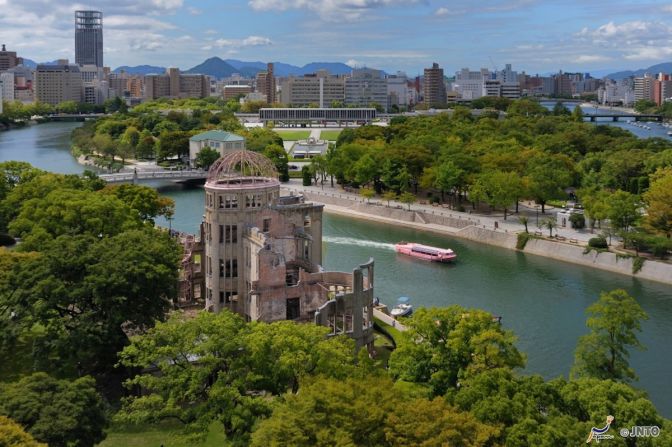
Genbaku Dome —
Hiroshima's Atomic Bomb Genbaku Dome became a UNESCO World Heritage Site in 1996. When the United States dropped the atomic bomb on August 6, 1945, it exploded just above the building.

Hiroshima Peace Memorial Museum —
Visits by foreign tourists to the Hiroshima Peace Memorial Museum hit a record high of 338,891 in 2015.

Reliving the tragedy —
Visitors come to bear witness to preserved burnt wreckage, painful survivor testimonies and human shadows left permanently visible after the atomic bomb explosion's incandescent destruction.

Remembering the war —
Each August, remembrance events are held in front of the Atomic Bomb Dome at Hiroshima's Peace Memorial Park.

A-Bomb Dome —
Designed in 1915 by a Czech architect, Hiroshima's Atomic Bomb Genbaku Dome served as the city's Industrial Promotion Hall in 1945. The bomb didn't destroy it completely because the immediate blast and heat buffered the air at ground zero.

Mushroom clouds —
Numerous photographs of the mushroom cloud created when the atomic bomb was dropped are on display in the Hiroshima Peace Memorial Museum.


